Abstract
1. Isoarecolone was approximately 250 times less potent than nicotine as an inhibitor of [3H]-nicotine binding to rat brain membranes. Isoarecolone failed to inhibit the binding of the nicotinic ligand [125I]-alpha-bungarotoxin or of the muscarinic ligand [3H]-QNB. 2. Nicotine (0.01-30 microM) evoked the release of [3H]-dopamine from striatal and frontal cortex synaptosomes, with EC50 values of approximately 0.5 microM in each case. This release was largely mecamylamine-sensitive. 3. Isoarecolone (1-200 microM) evoked predominantly mecamylamine-sensitive dopamine release from both striatal and cortical synaptosomes, with a potency at least 20 times less than that of nicotine. The maximum effect of isoarecolone was less than that of nicotine, particularly in the frontal cortex preparation. 4. In control rats treated chronically with saline, neither nicotine nor isoarecolone had clear effects on locomotor activity at the doses tested. Chronic treatment with nicotine clearly sensitized rats to the locomotor activating effect of isoarecolone was seen at a dose about 40 times larger than that of nicotine. 5. The low potency and efficacy of isoarecolone in facilitating sensitized locomotor activity resembled its lower potency and efficacy, compared with nicotine, in evoking dopamine release in vitro. The agonist profile of the nicotinic receptor population mediating dopamine release may determine the pharmacological characteristics of consequent locomotor behaviour.
Full text
PDF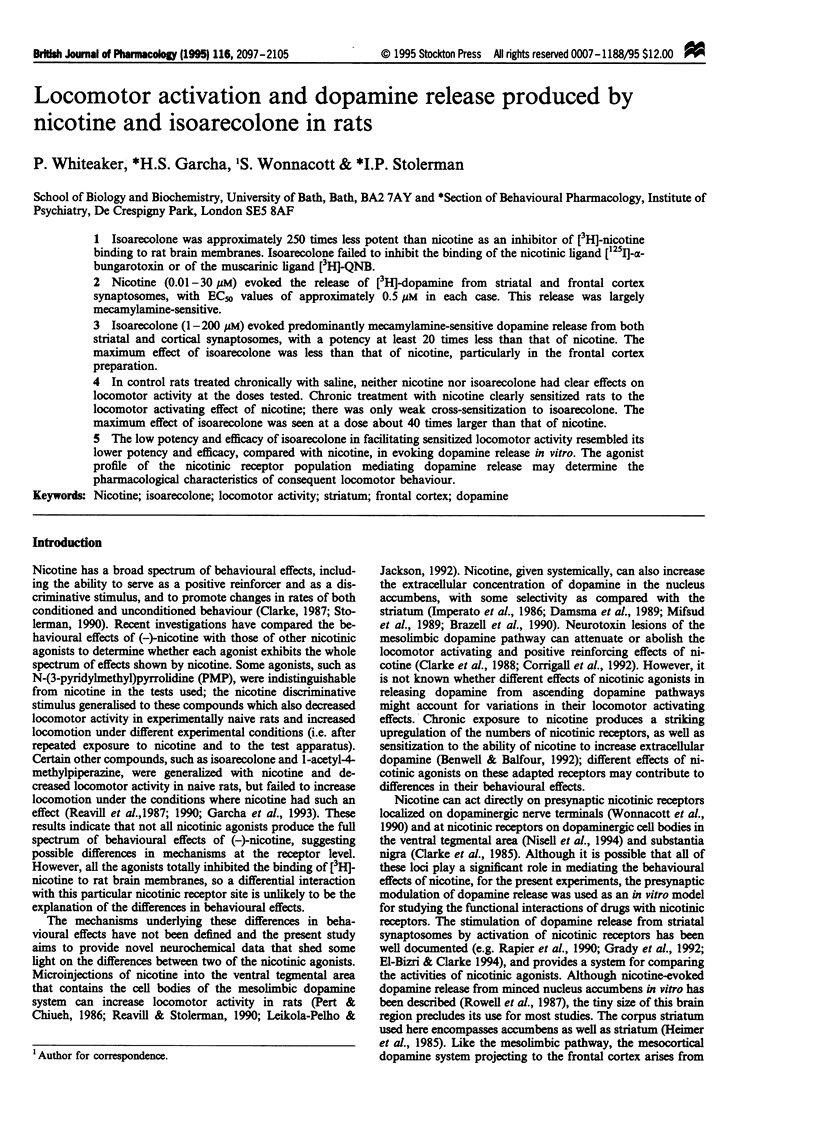
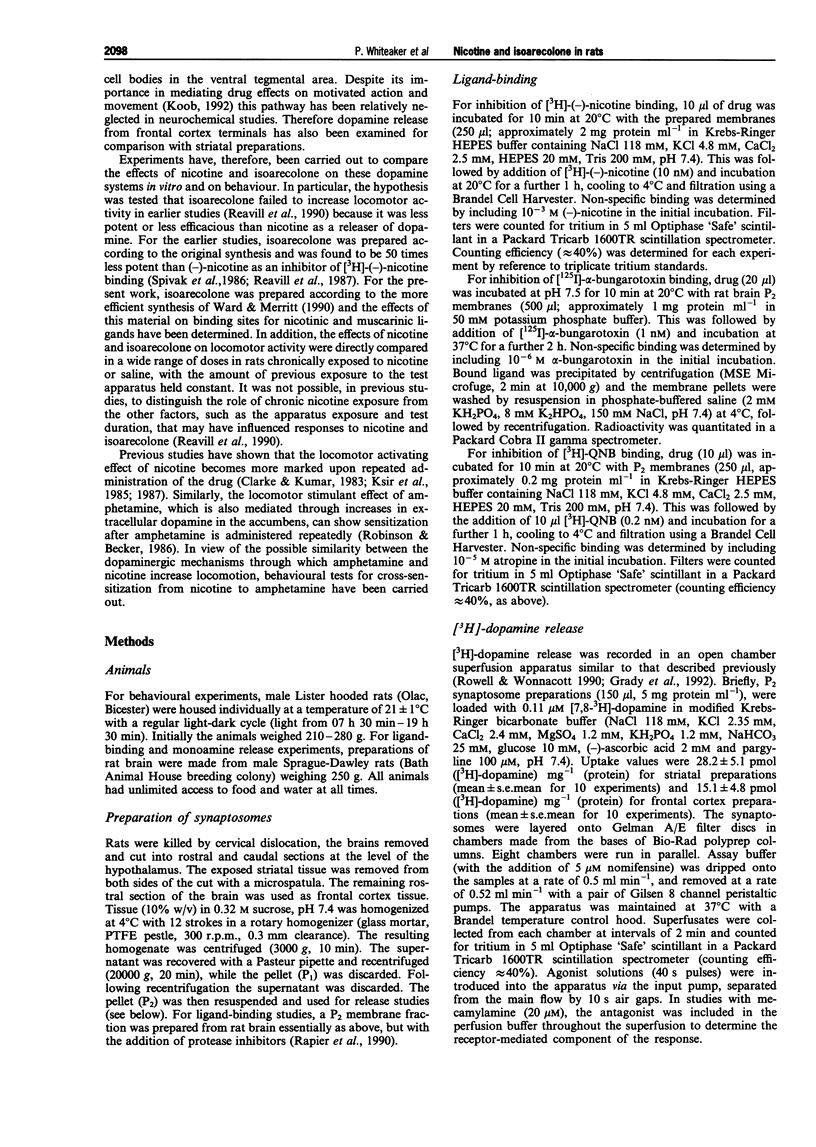
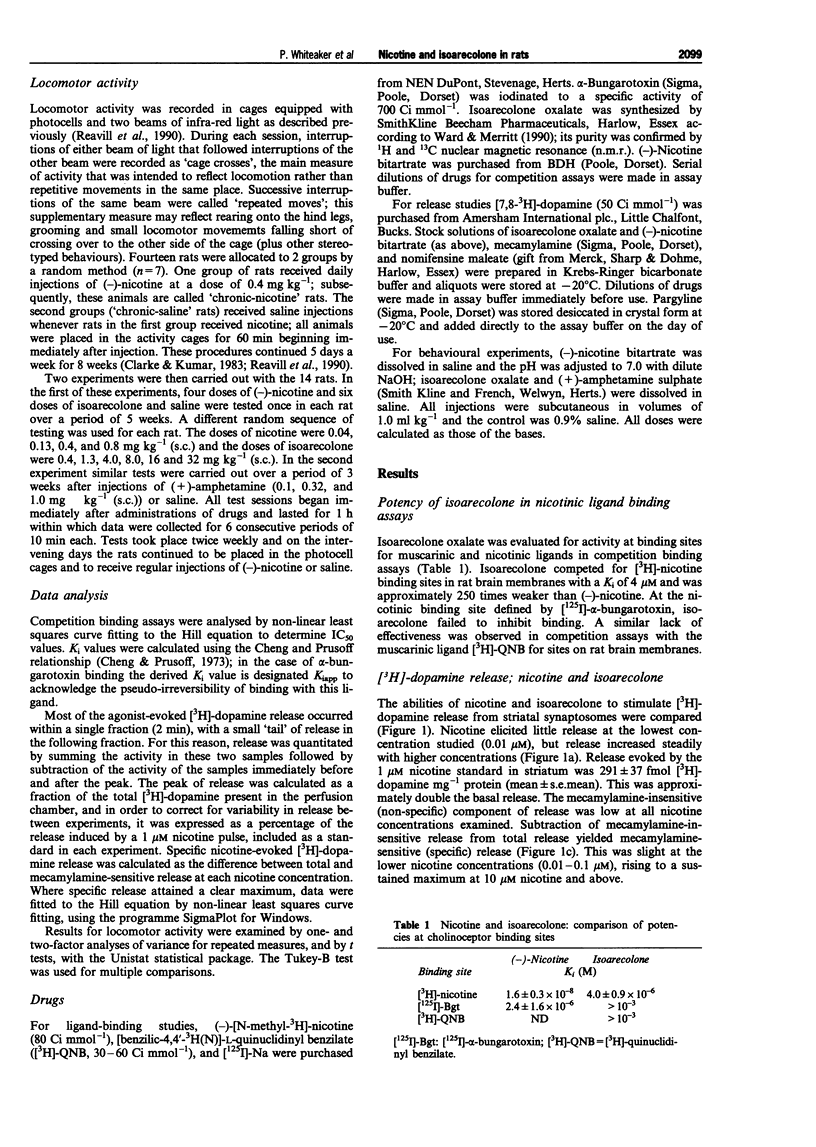
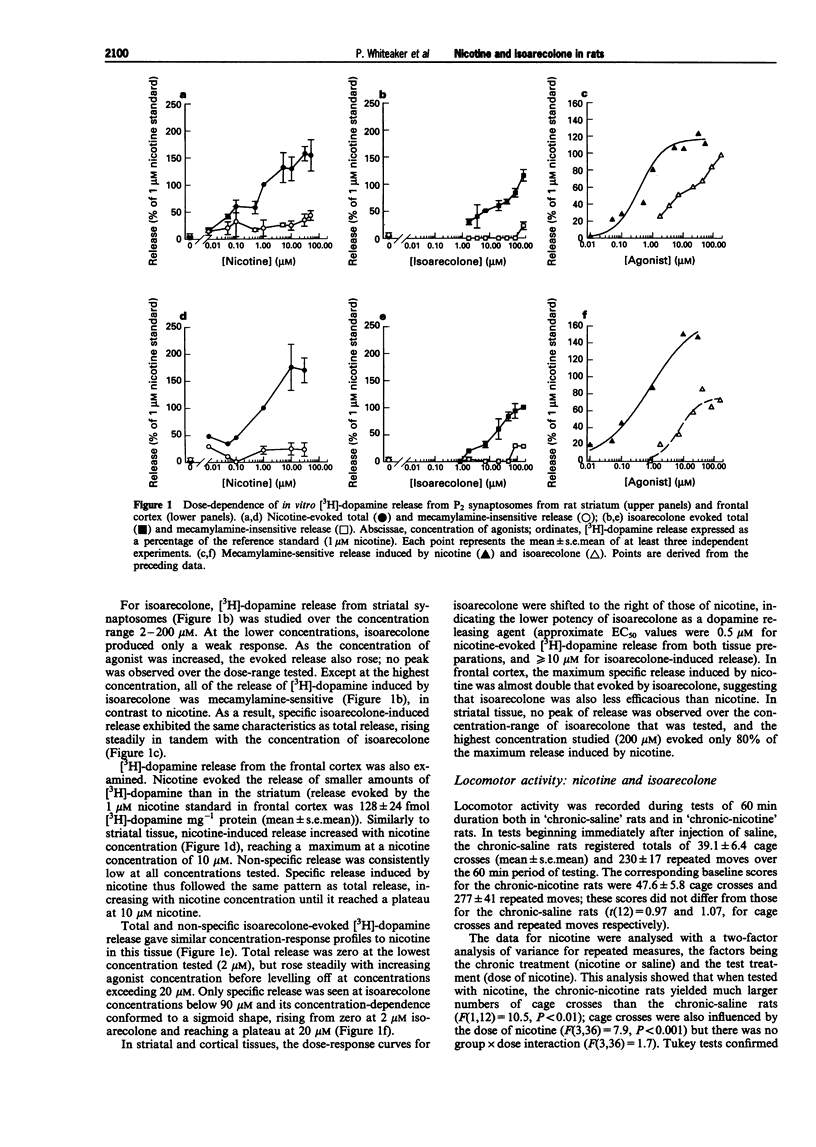
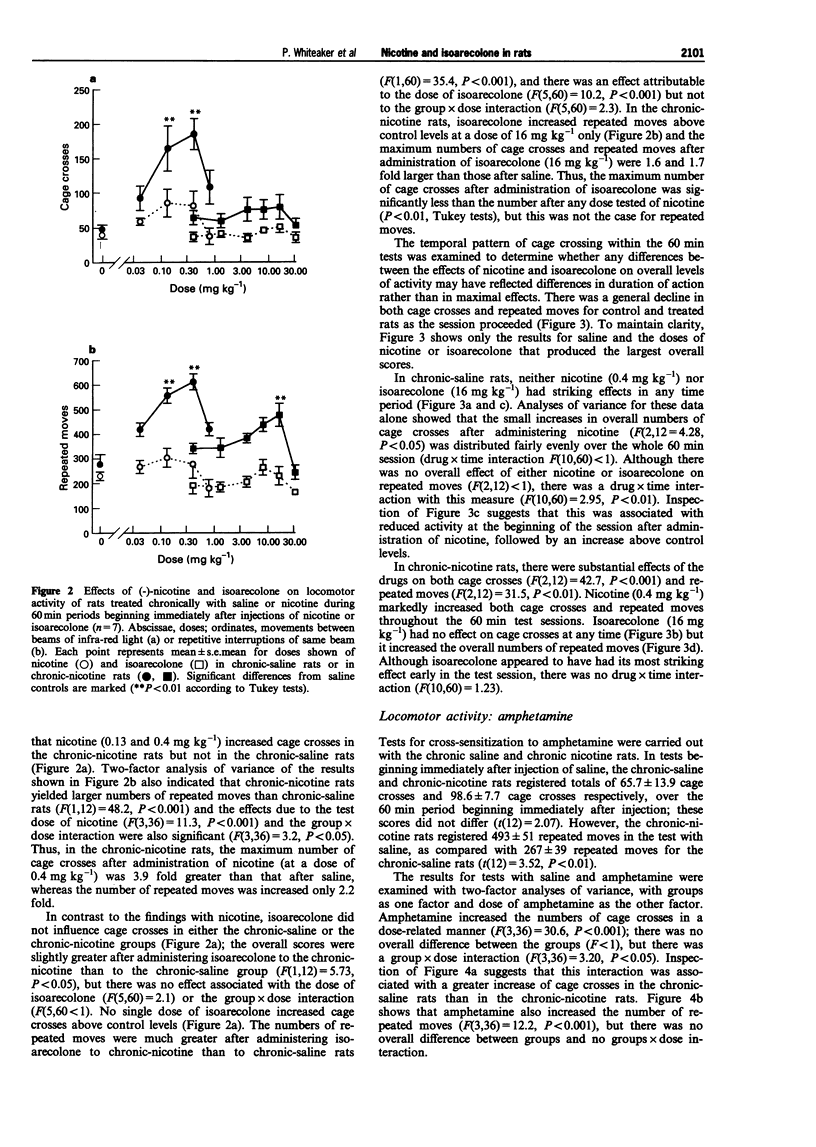
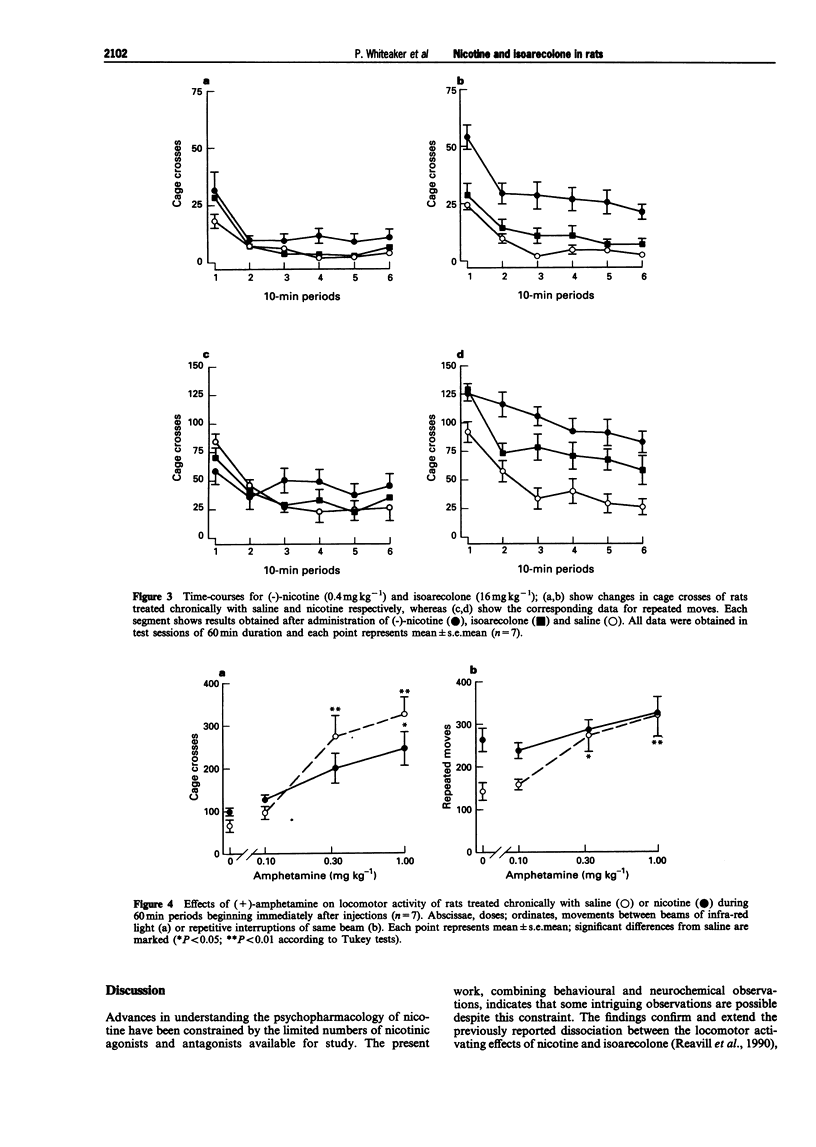
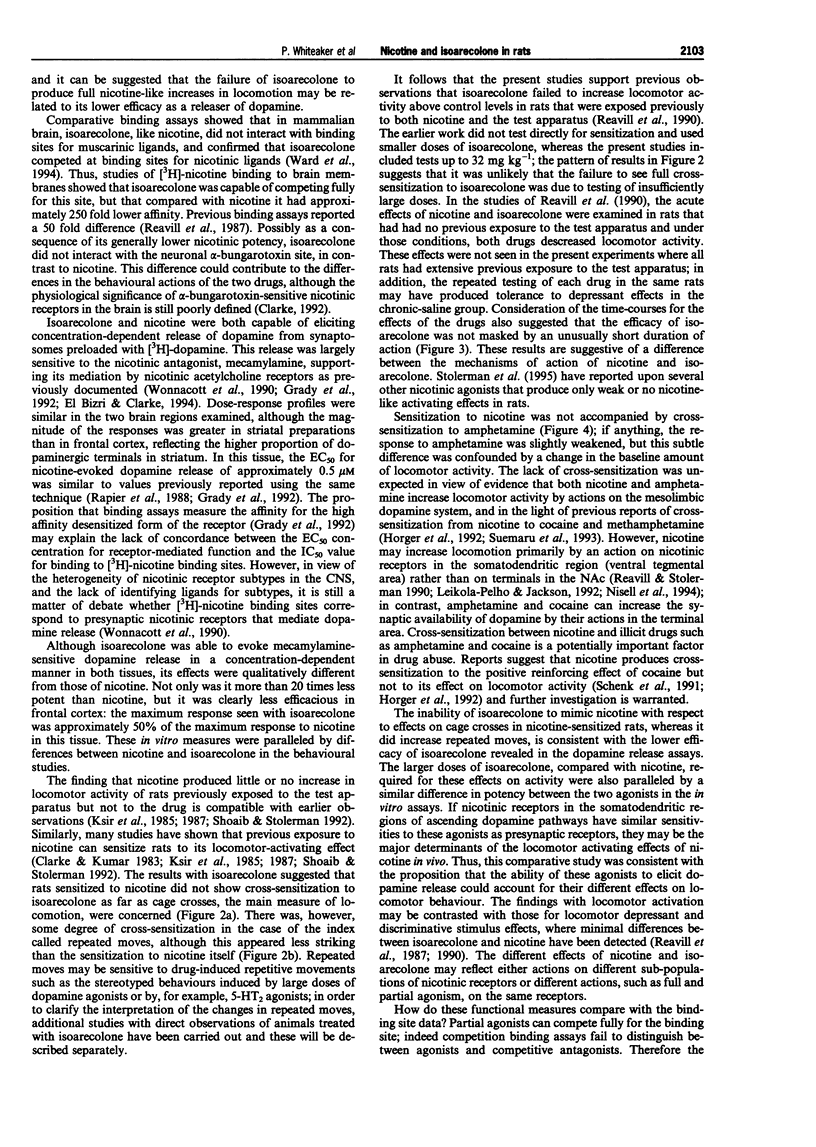
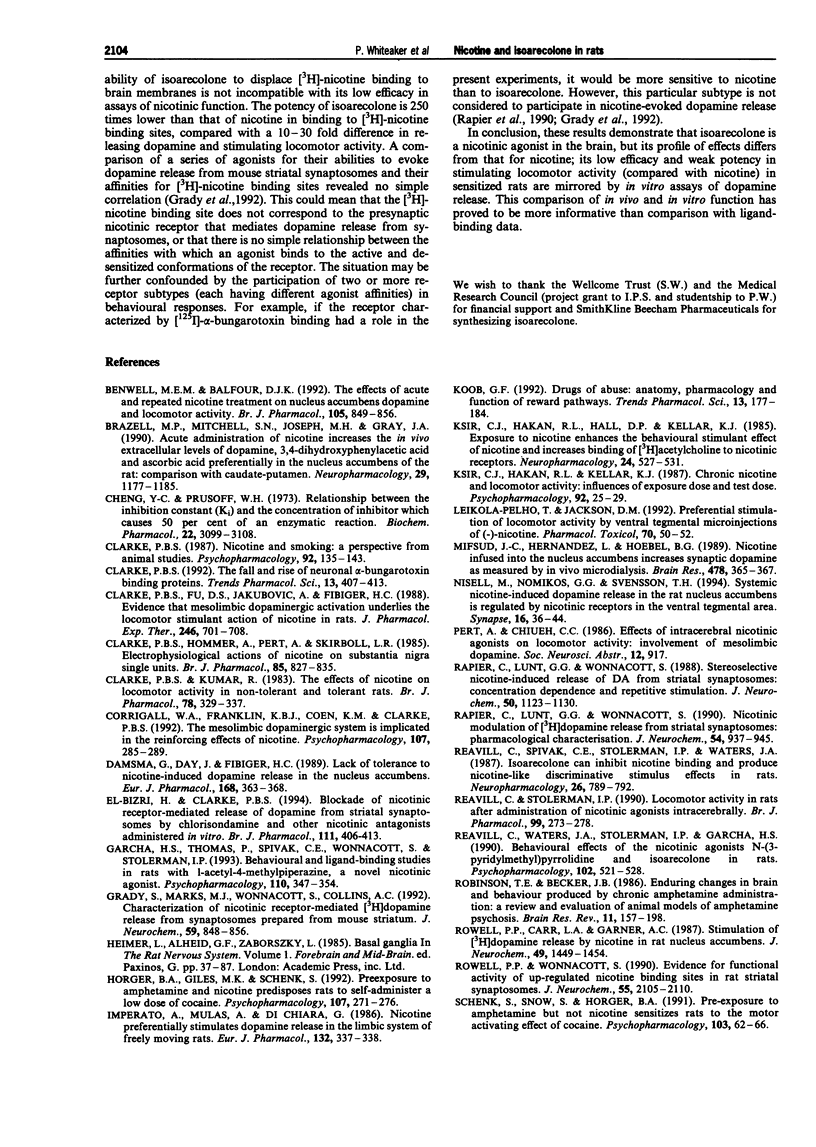
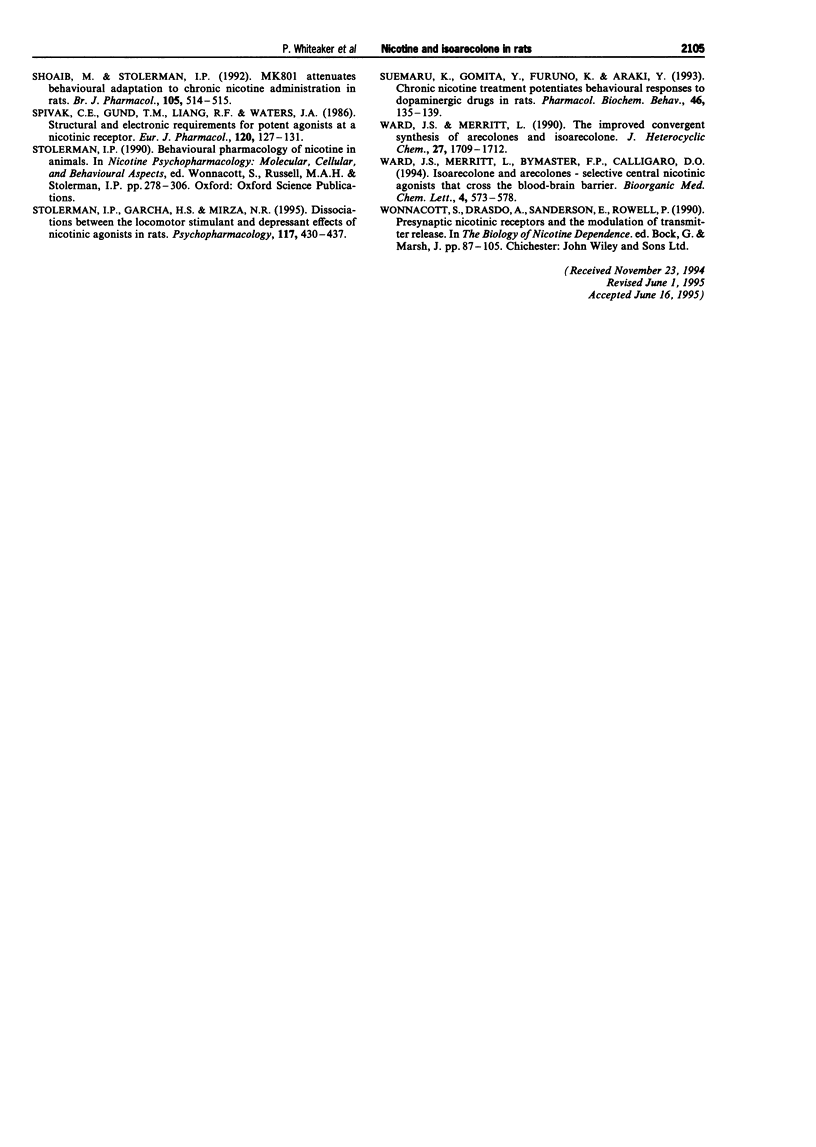
Selected References
These references are in PubMed. This may not be the complete list of references from this article.
- Benwell M. E., Balfour D. J. The effects of acute and repeated nicotine treatment on nucleus accumbens dopamine and locomotor activity. Br J Pharmacol. 1992 Apr;105(4):849–856. doi: 10.1111/j.1476-5381.1992.tb09067.x. [DOI] [PMC free article] [PubMed] [Google Scholar]
- Brazell M. P., Mitchell S. N., Joseph M. H., Gray J. A. Acute administration of nicotine increases the in vivo extracellular levels of dopamine, 3,4-dihydroxyphenylacetic acid and ascorbic acid preferentially in the nucleus accumbens of the rat: comparison with caudate-putamen. Neuropharmacology. 1990 Dec;29(12):1177–1185. doi: 10.1016/0028-3908(90)90042-p. [DOI] [PubMed] [Google Scholar]
- Cheng Y., Prusoff W. H. Relationship between the inhibition constant (K1) and the concentration of inhibitor which causes 50 per cent inhibition (I50) of an enzymatic reaction. Biochem Pharmacol. 1973 Dec 1;22(23):3099–3108. doi: 10.1016/0006-2952(73)90196-2. [DOI] [PubMed] [Google Scholar]
- Clarke P. B., Fu D. S., Jakubovic A., Fibiger H. C. Evidence that mesolimbic dopaminergic activation underlies the locomotor stimulant action of nicotine in rats. J Pharmacol Exp Ther. 1988 Aug;246(2):701–708. [PubMed] [Google Scholar]
- Clarke P. B., Hommer D. W., Pert A., Skirboll L. R. Electrophysiological actions of nicotine on substantia nigra single units. Br J Pharmacol. 1985 Aug;85(4):827–835. doi: 10.1111/j.1476-5381.1985.tb11081.x. [DOI] [PMC free article] [PubMed] [Google Scholar]
- Clarke P. B., Kumar R. The effects of nicotine on locomotor activity in non-tolerant and tolerant rats. Br J Pharmacol. 1983 Feb;78(2):329–337. doi: 10.1111/j.1476-5381.1983.tb09398.x. [DOI] [PMC free article] [PubMed] [Google Scholar]
- Clarke P. B. Nicotine and smoking: a perspective from animal studies. Psychopharmacology (Berl) 1987;92(2):135–143. doi: 10.1007/BF00177905. [DOI] [PubMed] [Google Scholar]
- Clarke P. B. The fall and rise of neuronal alpha-bungarotoxin binding proteins. Trends Pharmacol Sci. 1992 Nov;13(11):407–413. doi: 10.1016/0165-6147(92)90125-p. [DOI] [PubMed] [Google Scholar]
- Corrigall W. A., Franklin K. B., Coen K. M., Clarke P. B. The mesolimbic dopaminergic system is implicated in the reinforcing effects of nicotine. Psychopharmacology (Berl) 1992;107(2-3):285–289. doi: 10.1007/BF02245149. [DOI] [PubMed] [Google Scholar]
- Damsma G., Day J., Fibiger H. C. Lack of tolerance to nicotine-induced dopamine release in the nucleus accumbens. Eur J Pharmacol. 1989 Sep 22;168(3):363–368. doi: 10.1016/0014-2999(89)90798-x. [DOI] [PubMed] [Google Scholar]
- Garcha H. S., Thomas P., Spivak C. E., Wonnacott S., Stolerman I. P. Behavioural and ligand-binding studies in rats with 1-acetyl-4-methylpiperazine, a novel nicotinic agonist. Psychopharmacology (Berl) 1993;110(3):347–354. doi: 10.1007/BF02251292. [DOI] [PubMed] [Google Scholar]
- Grady S., Marks M. J., Wonnacott S., Collins A. C. Characterization of nicotinic receptor-mediated [3H]dopamine release from synaptosomes prepared from mouse striatum. J Neurochem. 1992 Sep;59(3):848–856. doi: 10.1111/j.1471-4159.1992.tb08322.x. [DOI] [PubMed] [Google Scholar]
- Horger B. A., Giles M. K., Schenk S. Preexposure to amphetamine and nicotine predisposes rats to self-administer a low dose of cocaine. Psychopharmacology (Berl) 1992;107(2-3):271–276. doi: 10.1007/BF02245147. [DOI] [PubMed] [Google Scholar]
- Imperato A., Mulas A., Di Chiara G. Nicotine preferentially stimulates dopamine release in the limbic system of freely moving rats. Eur J Pharmacol. 1986 Dec 16;132(2-3):337–338. doi: 10.1016/0014-2999(86)90629-1. [DOI] [PubMed] [Google Scholar]
- Koob G. F. Drugs of abuse: anatomy, pharmacology and function of reward pathways. Trends Pharmacol Sci. 1992 May;13(5):177–184. doi: 10.1016/0165-6147(92)90060-j. [DOI] [PubMed] [Google Scholar]
- Ksir C., Hakan R. L., Kellar K. J. Chronic nicotine and locomotor activity: influences of exposure dose and test dose. Psychopharmacology (Berl) 1987;92(1):25–29. doi: 10.1007/BF00215474. [DOI] [PubMed] [Google Scholar]
- Ksir C., Hakan R., Hall D. P., Jr, Kellar K. J. Exposure to nicotine enhances the behavioral stimulant effect of nicotine and increases binding of [3H]acetylcholine to nicotinic receptors. Neuropharmacology. 1985 Jun;24(6):527–531. doi: 10.1016/0028-3908(85)90058-9. [DOI] [PubMed] [Google Scholar]
- Leikola-Pelho T., Jackson D. M. Preferential stimulation of locomotor activity by ventral tegmental microinjections of (-)-nicotine. Pharmacol Toxicol. 1992 Jan;70(1):50–52. doi: 10.1111/j.1600-0773.1992.tb00425.x. [DOI] [PubMed] [Google Scholar]
- Mifsud J. C., Hernandez L., Hoebel B. G. Nicotine infused into the nucleus accumbens increases synaptic dopamine as measured by in vivo microdialysis. Brain Res. 1989 Jan 30;478(2):365–367. doi: 10.1016/0006-8993(89)91518-7. [DOI] [PubMed] [Google Scholar]
- Nisell M., Nomikos G. G., Svensson T. H. Systemic nicotine-induced dopamine release in the rat nucleus accumbens is regulated by nicotinic receptors in the ventral tegmental area. Synapse. 1994 Jan;16(1):36–44. doi: 10.1002/syn.890160105. [DOI] [PubMed] [Google Scholar]
- Rapier C., Lunt G. G., Wonnacott S. Nicotinic modulation of [3H]dopamine release from striatal synaptosomes: pharmacological characterisation. J Neurochem. 1990 Mar;54(3):937–945. doi: 10.1111/j.1471-4159.1990.tb02341.x. [DOI] [PubMed] [Google Scholar]
- Rapier C., Lunt G. G., Wonnacott S. Stereoselective nicotine-induced release of dopamine from striatal synaptosomes: concentration dependence and repetitive stimulation. J Neurochem. 1988 Apr;50(4):1123–1130. doi: 10.1111/j.1471-4159.1988.tb10582.x. [DOI] [PubMed] [Google Scholar]
- Reavill C., Spivak C. E., Stolerman I. P., Waters J. A. Isoarecolone can inhibit nicotine binding and produce nicotine-like discriminative stimulus effects in rats. Neuropharmacology. 1987 Jul;26(7A):789–792. doi: 10.1016/0028-3908(87)90244-9. [DOI] [PubMed] [Google Scholar]
- Reavill C., Stolerman I. P. Locomotor activity in rats after administration of nicotinic agonists intracerebrally. Br J Pharmacol. 1990 Feb;99(2):273–278. doi: 10.1111/j.1476-5381.1990.tb14693.x. [DOI] [PMC free article] [PubMed] [Google Scholar]
- Reavill C., Waters J. A., Stolerman I. P., Garcha H. S. Behavioural effects of the nicotinic agonists N-(3-pyridylmethyl)pyrrolidine and isoarecolone in rats. Psychopharmacology (Berl) 1990;102(4):521–528. doi: 10.1007/BF02247135. [DOI] [PubMed] [Google Scholar]
- Robinson T. E., Becker J. B. Enduring changes in brain and behavior produced by chronic amphetamine administration: a review and evaluation of animal models of amphetamine psychosis. Brain Res. 1986 Jun;396(2):157–198. doi: 10.1016/s0006-8993(86)80193-7. [DOI] [PubMed] [Google Scholar]
- Rowell P. P., Carr L. A., Garner A. C. Stimulation of [3H]dopamine release by nicotine in rat nucleus accumbens. J Neurochem. 1987 Nov;49(5):1449–1454. doi: 10.1111/j.1471-4159.1987.tb01013.x. [DOI] [PubMed] [Google Scholar]
- Rowell P. P., Wonnacott S. Evidence for functional activity of up-regulated nicotine binding sites in rat striatal synaptosomes. J Neurochem. 1990 Dec;55(6):2105–2110. doi: 10.1111/j.1471-4159.1990.tb05802.x. [DOI] [PubMed] [Google Scholar]
- Schenk S., Snow S., Horger B. A. Pre-exposure to amphetamine but not nicotine sensitizes rats to the motor activating effect of cocaine. Psychopharmacology (Berl) 1991;103(1):62–66. doi: 10.1007/BF02244075. [DOI] [PubMed] [Google Scholar]
- Shoaib M., Stolerman I. P. MK801 attenuates behavioural adaptation to chronic nicotine administration in rats. Br J Pharmacol. 1992 Mar;105(3):514–515. doi: 10.1111/j.1476-5381.1992.tb09010.x. [DOI] [PMC free article] [PubMed] [Google Scholar]
- Spivak C. E., Gund T. M., Liang R. F., Waters J. A. Structural and electronic requirements for potent agonists at a nicotinic receptor. Eur J Pharmacol. 1986 Jan 14;120(1):127–131. doi: 10.1016/0014-2999(86)90652-7. [DOI] [PubMed] [Google Scholar]
- Stolerman I. P., Garcha H. S., Mirza N. R. Dissociations between the locomotor stimulant and depressant effects of nicotinic agonists in rats. Psychopharmacology (Berl) 1995 Feb;117(4):430–437. doi: 10.1007/BF02246215. [DOI] [PubMed] [Google Scholar]
- Suemaru K., Gomita Y., Furuno K., Araki Y. Chronic nicotine treatment potentiates behavioral responses to dopaminergic drugs in rats. Pharmacol Biochem Behav. 1993 Sep;46(1):135–139. doi: 10.1016/0091-3057(93)90329-r. [DOI] [PubMed] [Google Scholar]
- Wonnacott S., Drasdo A., Sanderson E., Rowell P. Presynaptic nicotinic receptors and the modulation of transmitter release. Ciba Found Symp. 1990;152:87–105. doi: 10.1002/9780470513965.ch6. [DOI] [PubMed] [Google Scholar]
- el-Bizri H., Clarke P. B. Blockade of nicotinic receptor-mediated release of dopamine from striatal synaptosomes by chlorisondamine and other nicotinic antagonists administered in vitro. Br J Pharmacol. 1994 Feb;111(2):406–413. doi: 10.1111/j.1476-5381.1994.tb14749.x. [DOI] [PMC free article] [PubMed] [Google Scholar]


